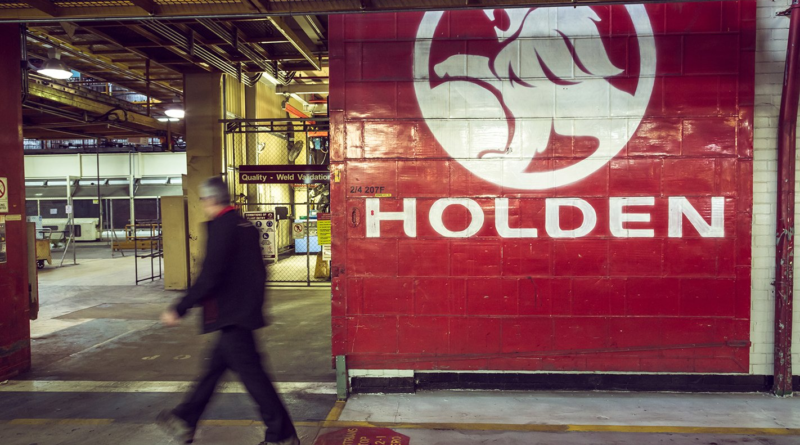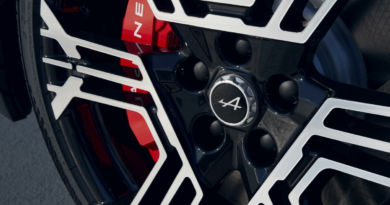What would Holden’s line-up look like today? AI helps reimagine a cancelled future – WhichCar
Holden’s death as a homegrown car-maker in 2021 still causes pain across Australia and had a big effect on the local car market. While many of its former customers have moved on, there’s certainly a Holden-sized hole for car buyers, especially when it comes to good value performance cars like V8-powered family sedans.
With that, we tasked AI with imagining what Holden’s potential line-up would look like in 2025. We added electric vehicles, hybrids and even took a page out of its older models to create a virtual 2025 Holden showroom. Take a look:
With the Cruze (the Astra sedan when it was last sold in Australia) no longer produced, Holden might have had to get creative with sourcing a small car. With a hybrid powertrain a must for NVES compliance, why not turn to one of the best producers of this vehicle type globally and recreate an old badge engineering situation: the Holden Nova, based on the Toyota Corolla.
The E90 and E100 generation Corollas were badge engineered and sold as the Holden Nova in Australia from 1989 to 1996, something Holden could’ve easily recreated for modern audiences – Toyota already gave the Corolla wagon and RAV4 to Suzuki to sell in European markets, so it could do the same for Australia too. Plus, Holden could even rebadge the GR Corolla for a hot hatch.
The Barina is a legendary nameplate that graced various generations of Holden from 1985 to 2018 and with the last-generation model no longer sold globally, Holden could have based the Barina Cross on the previous shape Trax to serve as its entry-level SUV.
Engine options would include the 1.8-litre naturally aspirated and 1.4-litre turbocharged petrol engines, and there would no doubt have to be some sort of hybrid option needed. Pricing would likely start at around $25,000 range for the base LS and it would compete against cars such as the Hyundai Venue and Kia Stonic.
The Holden Trax nameplate is not new with the previous-generation model selling quite well in Australia. However, the Trax is actually one of the few cars previously sold by Holden that’s still in production, meaning that Holden could easily import it now. Competition to the Trax would be fierce and include rivals such as the Mazda CX-30 and Hyundai Kona.
In North America, the Trax uses a turbocharged 1.2-litre three-cylinder petrol engine, something we think would have to be upgraded to at least a 1.5-litre engine if sold in Australia, plus the inevitable hybrid model too. The latest Trax sells well in North America and we’re sure that it would do the same in Australia under Holden’s guidance.
The original Apollo was sold from 1989 to 1997, until it was replaced by the European-made Vectra. Like the Nova, the Apollo was based on a Toyota product, in this case, the SV21 and XV10 Camrys. For the new Apollo, especially considering that Chevrolet no longer makes a mid-size sedan for the North American market that Holden could take, the current shape XV50 Camry would form the base.
For drivetrains, the popular 2.5-litre four-cylinder hybrid engine in the Camry would likely form the majority of the range, though perhaps with a non-hybrid model too – maybe even the 3.5-litre Toyota V6 with an eight-speed automatic transmission.
In 2025, car makers need to sell electric SUVs and Holden has a few good choices available from Chevrolet’s lineup. We think the Equinox EV would be the best choice because it’s affordable, spacious and gives good driving range, plus it’s also attractive to look at and well equipped across its range. It’s also good value for money against competition such as the Tesla Model Y and Hyundai Ioniq 5.
Priced from US$33,600 (around AUD$51,000 at current exchange rates, but Holden would definitely be able to price it better) and giving over 500km of range, the Equinox EV would be quite competitive in the mid-size electric SUV segment in Australia as part of Holden’s lineup.
Even though large sedan sales are small compared to what they once were, Holden couldn’t exist in 2025 without the iconic Commodore in its lineup. Using the VF and its Zeta platform as a basis, the next-generation model – perhaps codenamed ‘VG’ – would use a turbocharged 2.7-litre four-cylinder petrol engine that is used in some US market GM products, as well as a V8-powered SS using a 6.2-litre V8. A four-cylinder hybrid model could be added as well, perhaps based on the 2.7-litre turbo engine.
Both sedan and Sportswagon variants would be available and while an eight-speed automatic would be standard across the range, certain models like the SS would be available with a six-speed manual as well. Pricing would kick off in the low $40,000 range, expanding to around $70,000 for top-spec models.
A big seven-seat SUV is another necessary product for Holden to sell in 2025 as families love them. Holden’s last seven-seat SUV was the Acadia from GM’s GMC brand, and this time around, we think Holden should sell the Chevrolet equivalent, which is called the Traverse. Why a Chevy and not a GMC? Well it all comes down to brand image and keeping a similar look – the Acadia looked different to any other Holden because it was the only GMC, and buyers noticed.
The Traverse is priced from around US$41,000 ($63,000 AUD) in entry-level LT form, and the whole range uses a 245kW 2.5-litre turbo-petrol engine with an eight-speed automatic transmission, though a hybrid drivetrain would also need to be added to the range. With seating for eight, good value for money, a big range of variants including an off-road special Z71 and punchy drivetrains, the Holden Traverse would be a big-seller in the local market.
To be successful in Australia, a car brand must sell a ute and the previous Holden Colorado was quite a successful product and while it’s no longer produced – General Motors Thailand no longer exists and its factory was sold to GWM – there is a Chevrolet Colorado sold in North America that Holden could sell in Australia. Why sell a ute? Just look how well the Toyota HiLux and Ford Ranger sell here.
The only engine option for the North American Colorado is a 231kW 2.7-litre turbocharged four-cylinder petrol engine with a 10-speed automatic transmission, while it can tow the benchmark 3.5-tonne that utes must be capable of in Australia. Pricing in the US for the current Colorado starts at US$32,000 (around AUD $50,000) for the entry-level WT and hits US$50,000 ($78,000 AUD), which is right in the mix of dual-cab utes in Australia today.
Features
Beyond the Ford rivalry and the dinky-di image, Holden once had a reputation for bold and visionary automotive concepts. Here’s our pick of the best…
One of Jake’s first words was Volvo because that was the family chariot in his infancy and it’s no shock that since then, he’s been obsessing over practical details such as rear seat folding mechanisms and rain-activated automatic headlights ever since.
SUBSCRIBE TO WHEELS from only $59
Buy a 6 month subscription for just $59.
Subscribe
It’s an unwinnable argument, but let’s start it anyway: here are the General’s top 10 soldiers that made the most important contribution to the battle for hearts, minds and wallets
Whether they were built here, or brought here, this lot helped shaped who we are
The search for the 2013 Wheels Car of the Year is on and we’re checking out the Holden VF Commodore
Need a new car on a budget? Here are your top 10 choices in the current marketplace.


